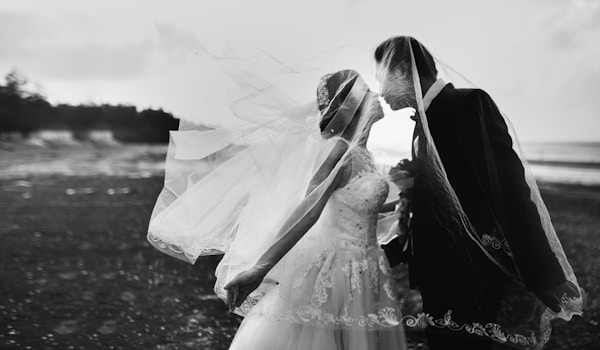Creating a Custom Wedding Dress: Methods for Design and Patterning
The Art of Custom Wedding Dress Patterns
Creating a custom wedding dress is one of the most exciting parts of planning a wedding. For many brides, this is an opportunity to express their individuality and personal style on one of the most important days of their lives. One of the key components to designing a stunning custom wedding dress is developing the right pattern. This article will explore the methods used to create a custom wedding dress pattern for a bride, offering insights into fabric choices, design techniques, and the overall process. Whether you're a bride-to-be or simply interested in fashion design, this guide will provide valuable information.
Understanding the Importance of a Custom Wedding Dress Pattern
A custom dress pattern is essential for achieving the perfect fit and style. Unlike off-the-rack dresses, custom patterns are tailored to the individual measurements and preferences of the bride, allowing for unique designs that reflect her personality. Here are some reasons why creating a custom wedding dress pattern is crucial:
- Personalization: Custom patterns allow for unique embellishments and details that might not be readily available in store-bought dresses.
- Perfect Fit: A well-made pattern ensures that the dress fits the bride perfectly, enhancing her confidence on her big day.
- Quality of Materials: Custom patterns allow the selection of high-quality fabrics, ensuring the dress not only looks stunning but feels wonderful as well.
Methods for Creating a Custom Wedding Dress Pattern
There are various methods for creating a custom wedding dress pattern, each with its unique techniques and advantages. Below are the most common methods:
1. Draping Technique
Draping is a hands-on method that involves manipulating fabric directly on a dress form to create the desired shape and style. This technique allows designers to visualize how the fabric falls and behaves in real time. The process typically involves the following steps:
- Selecting a suitable fabric for draping, such as muslin, which is easy to work with and affordable.
- Pinning the fabric onto the dress form to achieve the desired silhouette.
- Making adjustments and taking measurements to ensure a precise fit.
- Once satisfied with the drape, the designer can then create a flat pattern from the draped fabric.
2. Flat Pattern Making
Flat pattern making is a traditional method where a basic dress block is created and then modified to reflect the desired design elements. This technique requires a good understanding of pattern drafting principles. Here’s how it works:
- Creating a basic dress block tailored to the bride's measurements. This block serves as the foundation for the design.
- Modifying the block by adding or subtracting design elements such as sleeves, necklines, or skirts.
- Translating these modifications into a flat pattern that can later be used to cut the fabric.
3. Computer-Aided Design (CAD)
Technology has revolutionized pattern design with software that allows designers to create precise dress patterns digitally. CAD software facilitates intricate designs and adjustments. The process typically includes:
- Inputting the bride's measurements into the software.
- Experimenting with various design options through digital sketches and 3D modeling.
- Generating the final pattern that can be printed and used for fabric cutting.
| Comparison of Pattern Creation Methods | Draping | Flat Pattern Making | CAD |
| Level of Expertise Required | High | Moderate | High |
| Time Investment | Varies | Moderate | Fast |
| Customization Flexibility | High | Moderate | High |
Choosing the Right Fabric
The choice of fabric plays a crucial role in the success of the design and pattern. It is important to consider the drape, texture, and weight of the fabric, as these will influence the overall look of the wedding dress. Common fabrics for Wedding dresses include:
- Satin: A luxurious option that provides a stunning sheen and elegant drape.
- Chiffon: A lightweight and flowy fabric perfect for airy and romantic designs.
- Lace: Often used for overlays and detailing, lace adds a classic and sophisticated touch.

Working with a Professional Designer
While some brides might explore crafting their own patterns, many choose to work with a professional designer or seamstress. Collaborating with an expert has several benefits:
- Expert Guidance: A designer can offer valuable insights into fabric choices, style trends, and construction techniques.
- Time Efficiency: Professionals can navigate the intricate process of pattern creation much faster than a novice.
- Access to Resources: Designers often have access to high-quality materials and patterns that are not available to the general public.
Final Touches: Fittings and Adjustments
Once the pattern is created and the dress is constructed, it’s time for fittings. Fittings allow for final adjustments to ensure the perfect fit. Several fittings may be necessary, including:
- Bodice Fitting: Focusing on the upper portion of the dress to ensure comfort and support.
- Skirt Fitting: Checking the length and flare of the skirt for a balanced look.
- Final Adjustments: Making any minor changes to enhance the dress's overall appearance.
Conclusion: Crafting Your Dream Wedding Dress
Creating a custom wedding dress is a beautiful journey that requires careful planning and execution. By understanding the methods used to create a wedding dress pattern, brides can navigate this process with confidence. Whether choosing to drape, create flat patterns, or utilize CAD technology, the key is to prioritize comfort, fit, and personal style. Always consider collaborating with a professional to make your vision come to life efficiently. Remember, this is your special day, and the right wedding dress will not only make you look stunning but also feel completely at ease during your celebration. Embrace the journey to finding and creating your perfect dress!